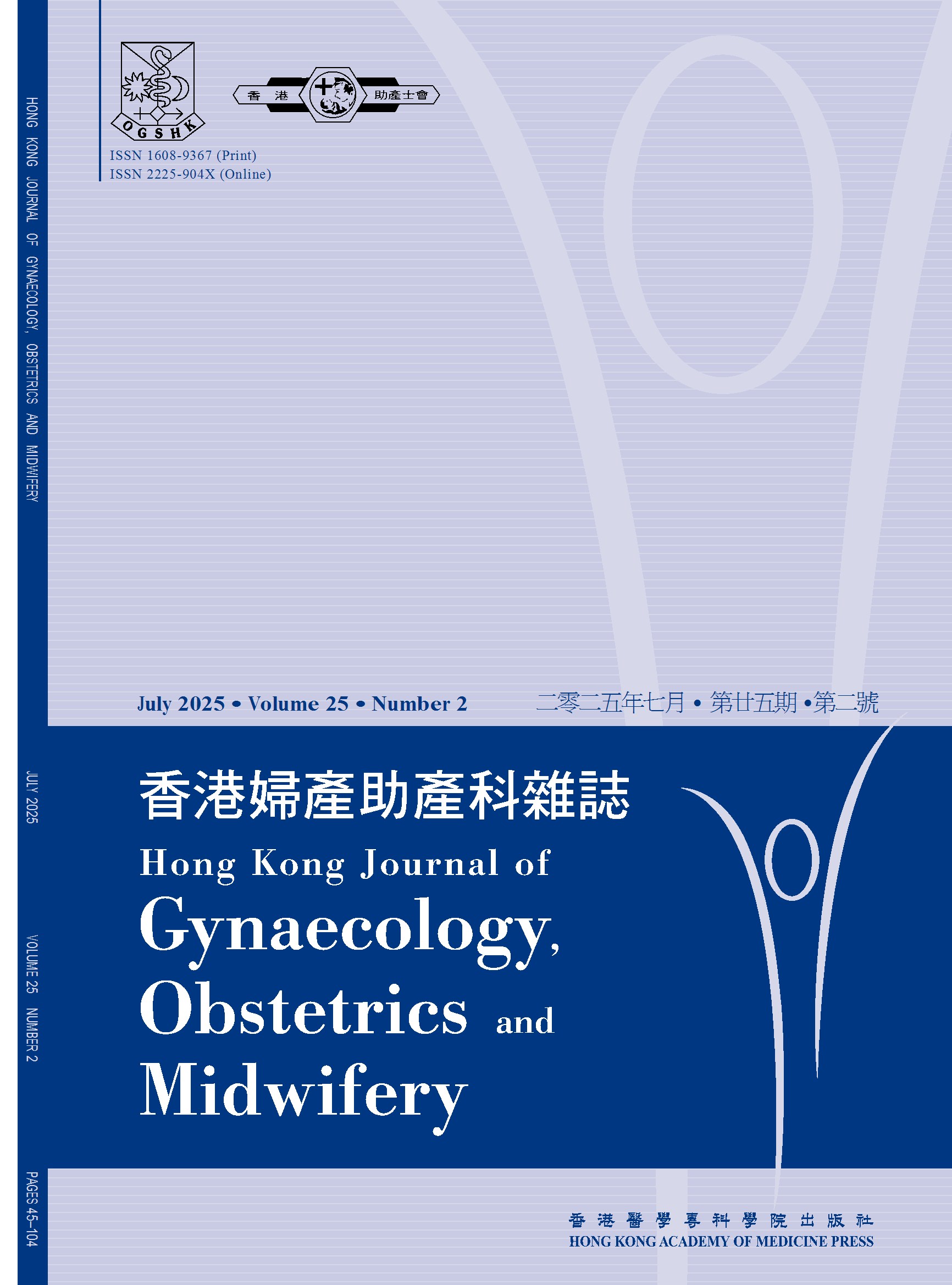Menstruation: the fifth vital sign in women of reproductive age
Keywords:
Anemia, iron deficiency, Menstruation, Metrorrhagia, Women’s healthAbstract
Menstruation is a vital sign of women’s health; every woman typically experiences 400 to 450 ovulations and 7 years of menstruation over her lifetime. Abnormal uterine bleeding (AUB) affects up to one-third of women during their reproductive years, impacting quality of life, but menstrual complaints are frequently under-reported. Healthy menstruation is determined by non-modifiable factors (age, ethnicity, and genetics) and modifiable factors (smoking, diet and nutrition, exercise, body weight, stress, gynaecological disorders, and systematic disorders). Healthy menstruation encompasses regularity, normal flow and duration, and the absence of dysmenorrhoea. These characteristics are indicators of a healthy reproductive system and overall well-being. AUB is a leading cause of iron deficiency and anaemia, particularly in women of reproductive age. In Hong Kong, 17.5% of women of reproductive age have iron deficiency. Comprehensive evaluation of menstruation is crucial in managing anaemia. Femtech (female technology) facilitates menstrual education and personalised health management. Recognition of menstruation as the fifth vital sign in women of reproductive age is important to overall health assessment. Early detection and management of AUB, along with related complications, namely iron-deficiency anaemia, can optimise women’s health outcomes.
References
1. FAST FACTS: Nine things you didn’t know about menstruation. Unicef Press release. 25 May 2018.
2. United Nations Population Fund. Menstrual health. Accessed 30 December 2024. Available from: https://www.unfpa.org/menstrual-health
3. Liu Z, Doan QV, Blumenthal P, Dubois RW. A systematic review evaluating health-related quality of life, work impairment, and health-care costs and utilization in abnormal uterine bleeding. Value Health 2007;10:183-94.
4. Schoep ME, Nieboer TE, van der Zanden M, Braat DDM, Nap AW. The impact of menstrual symptoms on everyday life: a survey among 42,879 women. Am J Obstet Gynecol 2019;220:569.e1-569.e7.
5. Munro MG, Critchley HOD, Fraser IS; FIGO Menstrual Disorders Committee. The two FIGO systems for normal and abnormal uterine bleeding symptoms and classification of causes of abnormal uterine bleeding in the reproductive years: 2018 revisions. Int J Gynaecol Obstet 2018;143:393-408.
6. Liang J, Ali F, Ramaiyer M, Borahay MA. Determinants and assessment of menstrual blood flow. Curr Epidemiol Rep 2023;10:210-20.
7. Ruth KS, Beaumont RN, Tyrrell J, et al. Genetic evidence that lower circulating FSH levels lengthen menstrual cycle, increase age at menopause and impact female reproductive health. Hum Reprod 2016;31:473-81.
8. Jung AN, Park JH, Kim J, et al. Detrimental effects of higher body mass index and smoking habits on menstrual cycles in Korean women. J Womens Health (Larchmt) 2017;26:83-90.
9. Grossman MP, Nakajima ST. Menstrual cycle bleeding patterns in cigarette smokers. Contraception 2006;73:562-5.
10. Onieva-Zafra MD, Fernández-Martínez E, Abreu-Sánchez A, et al. Relationship between diet, menstrual pain and other menstrual characteristics among Spanish students. Nutrients 2020;12:1759.
11. Hahn KA, Wise LA, Riis AH, et al. Correlates of menstrual cycle characteristics among nulliparous Danish women. Clin Epidemiol 2013;5:311-9.
12. Roberts RE, Farahani L, Webber L, Jayasena C. Current understanding of hypothalamic amenorrhoea. Ther Adv Endocrinol Metab 2020;11:2042018820945854.
13. Martini MG, Solmi F, Krug I, et al. Associations between eating disorder diagnoses, behaviors, and menstrual dysfunction in a clinical sample. Arch Womens Ment Health 2016;19:553-7.
14. Vyver E, Steinegger C, Katzman DK. Eating disorders and menstrual dysfunction in adolescents. Ann N Y Acad Sci 2008;1135:253-64.
15. Algars M, Huang L, Von Holle AF, et al. Binge eating and menstrual dysfunction. J Psychosom Res 2014;76:19-22.
16. Seif MW, Diamond K, Nickkho-Amiry M. Obesity and menstrual disorders. Best Pract Res Clin Obstet Gynaecol 2015;29:516-27.
17. Motzer SA, Hertig V. Stress, stress response, and health. Nurs Clin North Am 2004;39:1-17.
18. Maybin JA, Watters M, Rowley B, Walker CA, Sharp GC, Alvergne A. COVID-19 and abnormal uterine bleeding: potential associations and mechanisms. Clin Sci (Lond) 2024;138:153-71.
19. Pollack B, von Saltza E, McCorkell L, et al. Female reproductive health impacts of Long COVID and associated illnesses including ME/CFS, POTS, and connective tissue disorders: a literature review. Front Rehabil Sci 2023;4:1122673.
20. Jain V, Chodankar RR, Maybin JA, Critchley HOD. Uterine bleeding: how understanding endometrial physiology underpins menstrual health. Nat Rev Endocrinol 2022;18:290-308.
21. World Health Organization. Anaemia. Accessed 30 December 2024. Available from: https://www.who.int/news-room/fact-sheets/detail/anaemia
22. Thematic Report on Iron Status. Population Health Survey 2020-2022. Accessed 30 December 2024. Available from: https://www.chp.gov.hk/files/pdf/dh_phs_2020-22_iron_report_eng.pdf
23. Coulter A, Peto V, Jenkinson C. Quality of life and patient satisfaction following treatment for menorrhagia. Fam Pract 1994;11:394-401.
24. ACOG Committee Opinion No. 651: menstruation in girls and adolescents: using the menstrual cycle as a vital sign. Obstet Gynecol 2015;126:e143-e146.
25. American Academy of Pediatrics Committee on Adolescence; American College of Obstetricians and Gynecologists Committee on Adolescent Health Care, Diaz A, Laufer MR, Breech LL. Menstruation in girls and adolescents: using the menstrual cycle as a vital sign. Pediatrics 2006;118:2245-50.
26. Faubion SS. Femtech and midlife women’s health: good, bad, or ugly? Menopause 2021;28:347-8.
27. Broad A, Biswakarma R, Harper JC. A survey of women’s experiences of using period tracker applications: attitudes, ovulation prediction and how the accuracy of the app in predicting period start dates affects their feelings and behaviours. Womens Health (Lond) 2022;18:17455057221095246.
28. Association of Health Care Journalists. Impact of expected Roe v. Wade reversal on telehealth and femtech providers. Accessed 30 December 2024. Available from: https://healthjournalism.org/blog/2022/06/impact-of-expected-roe-v-wade-reversal-on-telehealth-and-femtech-providers/
Downloads
Published
How to Cite
Issue
Section
License
Copyright (c) 2025 Hong Kong Journal of Gynaecology, Obstetrics and Midwifery

This work is licensed under a Creative Commons Attribution-NonCommercial-NoDerivatives 4.0 International License.
The Journal has a fully Open Access policy and publishes all articles under a Creative Commons Attribution-NonCommercial-NoDerivatives 4.0 International (CC BY-NC-ND 4.0) licence. For any use other than that permitted by this license, written permission must be obtained from the Journal.





